

As resurgent strongman politics threaten democracies worldwide, Malaysia disrupted that trend in May with a historic change in government. Many in the West dubbed it a big win for democracy.
But the disruption is not over. Much like businesses shaken by digital innovation, Malaysia now stands at a crossroads: will the nation take the path towards self-reinvention for the better?
The Malaysia Reimagined Now survey by Accenture, in collaboration with The Edge, sought to ask what ordinary Malaysians really feel about this once-in-a-lifetime opportunity to remake the country. Over a three-week period, almost 2,500 Malaysians spoke their minds on their hopes and expectations for this new Malaysia.
And the voice of Malaysia is loud and clear: the people, via this survey, voted for a new, digitalised nation that leverages on technological innovations to overcome a myriad of challenges that put their and their children’s futures in doubt.
Click / Tap image to enlarge
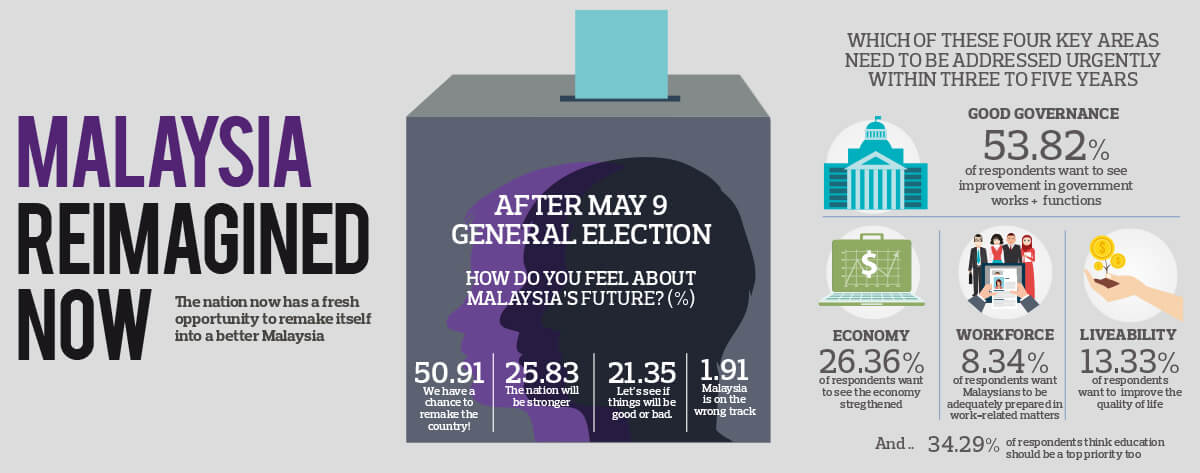
Among four key areas offered as possible focuses for the government, attacking corruption and enhancing good governance topped the priority list with 53.82%. Another 26.36% wanted the economy to be strengthened, 13.33% desired a better quality of life while 8.34% wanted the government to help workers prepare for disruption. Asked for a fifth option, 34.29% wanted reform of the education system.
“Governance topping the list of concerns shows us that there is a fatigue in terms of waiting for transparency,” remarks Azwan Baharuddin, Accenture Malaysia’s country managing director.
But the old ways of governing will not suffice and Malaysians realise this. Almost 90% of the surveyed respondents want the government to leverage on digital innovations like artificial intelligence, Internet of Things, big data analytics and machine learning to make better policies and improve service delivery.
“Malaysians are ready for and want more digital elements in their lives. In fact, we are not doing enough digitally and that has an impact across our daily lives,” adds Azwan.
Most respondents were urban, with Kuala Lumpur and Selangor the highest represented at 78.45%. Approximately 16.7% were scattered across the rest of Peninsular Malaysia with about 5% from Sabah and Sarawak.
Voice of the Future
Looking at the survey respondents’ demographics, the findings clearly represent the aspirations of the younger Malaysians.
Click / Tap image to enlarge

Almost 60% of those speaking their mind were aged 20 to 39 years old, with just under 6% below 20. These voters can be expected to hold any government in power to account in many elections to come.
So the pressure is on now for the current government to deliver their wishes for a better Malaysia. The good news, though, is that for now, most Malaysians feel the nation is off to a good start.
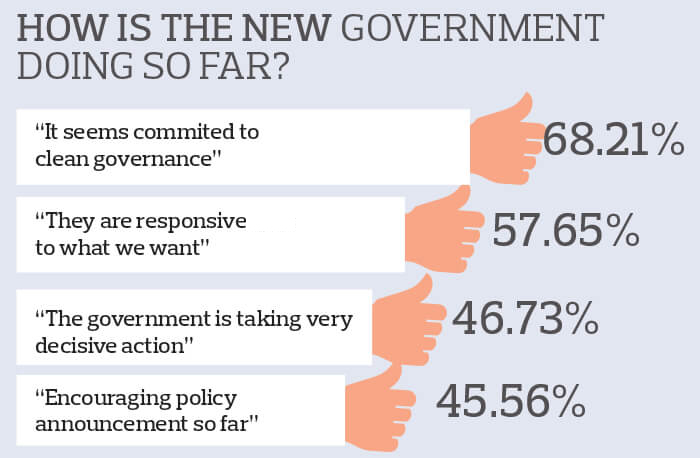
There is a strong sense that the new government is committed to clean governance, according to 68.21% of respondents. Another 57.65% feel the government now is responsive to the rakyat.
But the going will be getting tougher soon. Already, building a better Malaysia is a daunting task for any government of the day.
Delivering quality public services is now becoming prohibitively expensive at a time when competing priorities fight over limited public resources.
In addition, the weeks and months after the May 9 vote show that the challenges of corruption and poor governance are even more deeply entrenched than expected, meaning tackling them will require tremendous capacity.
Here is a taste: corruption cost the country RM46.9 billion in 2017, according to an estimate by Transparency International Malaysia.
Note that the estimate was from before May 9 , so the actual figure is likely even higher.
Since the government’s already strained and limited resources are also expected to be directed at boosting the economy, improving employment prospects, enhancing liveability and more, clearly the old ways of governing are unsustainable.
Click / Tap image to enlarge
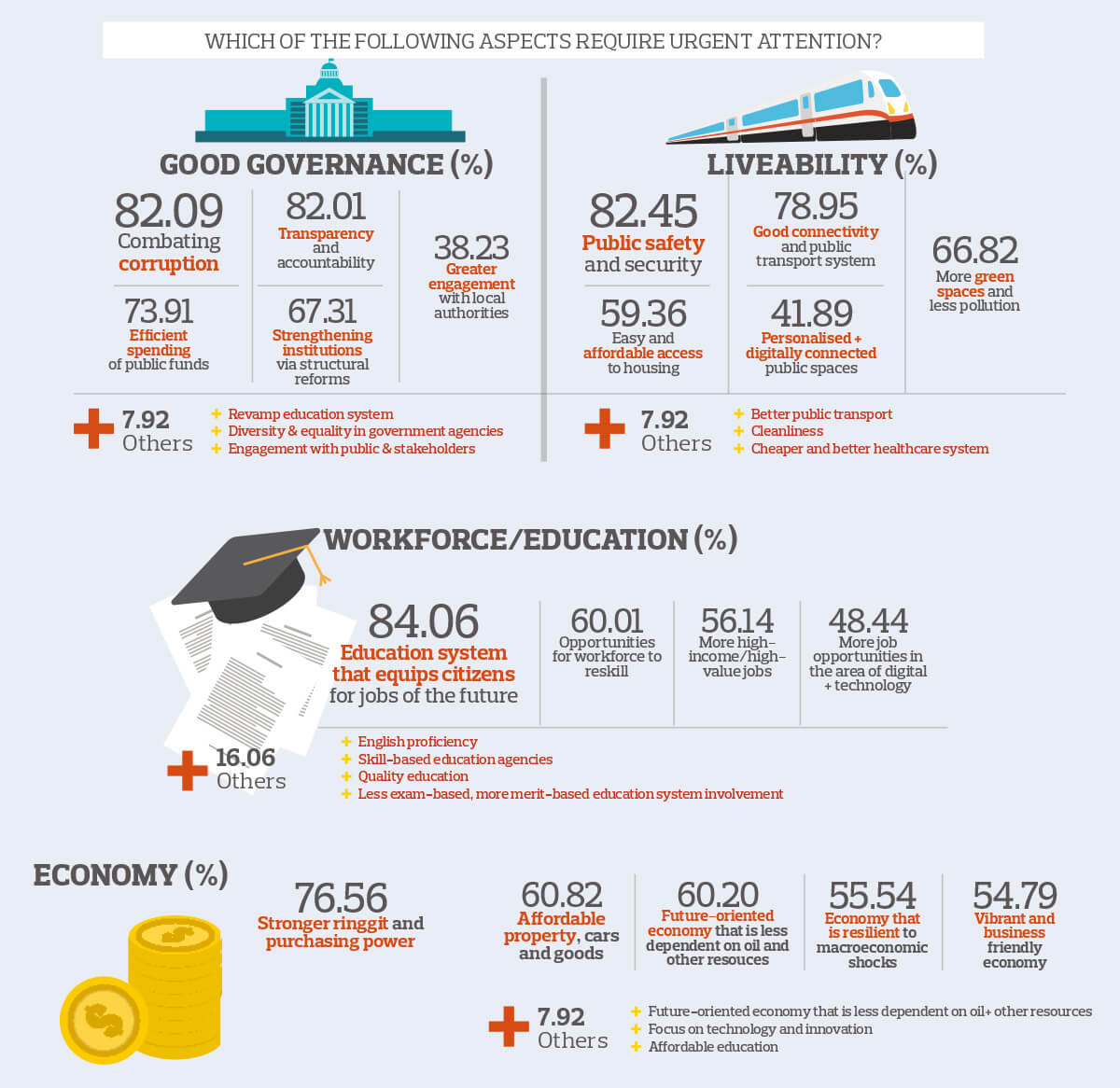
Herein lies the opportunity to reinvent how governance works. Where a solution was designed to solve a single problem in the past, innovation opens up possibilities to realise benefits beyond the original problem. Authorities leveraging digital innovation are able to only deter and detect wrongdoers, but the accuracy and impartial analysis of data could lead to better delivery of services, or even provide new insights.
Given the agility of digital tools today, governments are able to scale new capabilities that increase efficiency, productivity and creativity.
That also frees up government resources for other value-add services to better serve the people, says Azwan.
“You can offer basic government services with far fewer people. The spare capacity shouldn’t be discarded but should be used to think about how these services can be improved for the public,” he says.
For example, increasing public service deliveries used to mean employing more civil servants and opening more offices and counters for the public, which is never cost -efficient. With technology today, that increase can be achieved with digital delivery options that are far more efficient and effective, such as electronic services to renew road tax and pay vehicle summonses.
In other words, a digitalised government can do so much more for its people with the available resources.
That explains why various high-performing governments around the world share one common ground, according to a global Accenture survey: they have gone digital.
It is easy to see why. Digitalisation of government processes reduces the room for graft, inefficiencies and in the process raises the bar for transparency and openness.
Taking corruption as an example, digitalisation of processes will mean real-time data is available for algorithm-based monitoring, which would be far less corruptible than human beings.
One example is how e-procurement practices in Chile and London are run by artificial intelligence. Data analytics allow the best offers to be plucked out, while removing any risk of preferential treatment and cronyism.
“The problem with the manual intervention system we have today is that, for example, reports and papers can be misplaced into red files,” Azwan quips.
Upping the ante
It is not the case that Malaysia as a nation has not gone digital. The problem is that while we have, we are not agile in deploying it across ministries. For now, it is in isolated bits and pieces, says Azwan.
That has created a host of scattered digitalisation platforms that do not share a common base data. The effect? The public must submit again their basic information every time they register for a standalone government portal.
“When government agencies see a new form of technology, they say ‘hey this is great’, let’s do this. But they don’t take into consideration the wider infrastructure that is needed to support this technology, whether or not this fits in with other ministries,” says Azwan.
One example is that for tax-payers in Malaysia, their data is not immediately accessible to financial institutions for vetting when they apply for mortgages or other financing.
That slows down the entire process and adds unnecessary work for everyone involved — think about getting calls from five different banks who want to verify your information before approving your loan application.
But that repetitiveness can be circumvented, Azwan opines, by having a common database that is the backbone of various digitalised services for the people.
“We can do more with the base data, which is always the same. The problems are that we are not sewing the pieces together and we are not simplifying the use of data,” he adds.
For example, personal data digitally collected by the Road Transport Department may not be accessible to the Ministry of Education, meaning people accessing the services of both digitally would have to submit the same data twice — a needless repetition.
So, a better way forward is to have most Malaysians submit basic personal data only once in their lifetime. Properly managed, that basic data can be made accessible to any government department or financial institution they interact with, saving much time and speeding up processes.
The possibilities from there are boundless. Take Estonia — not exactly the first name that comes to mind for technological advances — which has successfully built a fully digital society, according to news reports.
In a nutshell, citizens of the tiny post-Soviet state are now completely wired into a single national digital platform for every government-related service from legislation, voting and education to healthcare, taxation and policing.
Time for a plan
Malaysians, it seems, are ready for a similarly digitalised future. Over three-quarters of the respondents to the survey support a centralised database of citizens’ data that will enrich their lives with more efficient government services, better law enforcement and safer public communities.
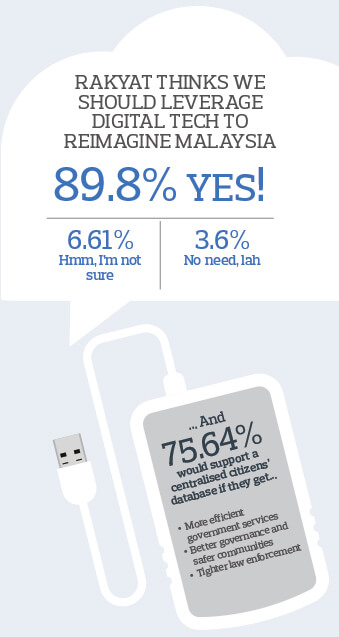
Apart from enhancing interaction with government services, the data can also enable the government to pivot the people for the future, addressing disruption to the workforce, as well as uplift liveability standards from city to city and even village to village.
So how do we get there? The first step is to have a national plan that ties everything already done together so that everyone can march forward in lockstep, says Azwan.
“To start off, we need to collect data. Then we need to have a unique vision of what we want to be; we don’t necessarily have to compare ourselves to our neighbours or to OECD countries. And we should leverage the different strengths of different ministries,” he adds.
But a big question still remains: how much will going digital ultimately cost the public finances and will the gains be worth the expense?
To be clear, staying as we are is not even an option. “We cannot afford that, because the risk is that we will be left behind by the rest of the world,” says Azwan.
Economically speaking, digitalising will eventually pay for itself, says Azwan. Citing past research, every 1% of digitalisation has been found to boost the digitalising country’s gross domestic product (GDP) by 0.5%, he adds.
A 0.5% GDP boost for Malaysia would mean a RM6.75 billion shot in the economic arm, considering the 2017 GDP total of RM1.35 trillion.
That boost would come in handy given the current environment of slowing economic growth. In mid-August, Bank Negara Malaysia lowered its forecast of Malaysia’s economic expansion for 2018 from 5.5% to 6% to approximately 5%.
Click / Tap image to enlarge
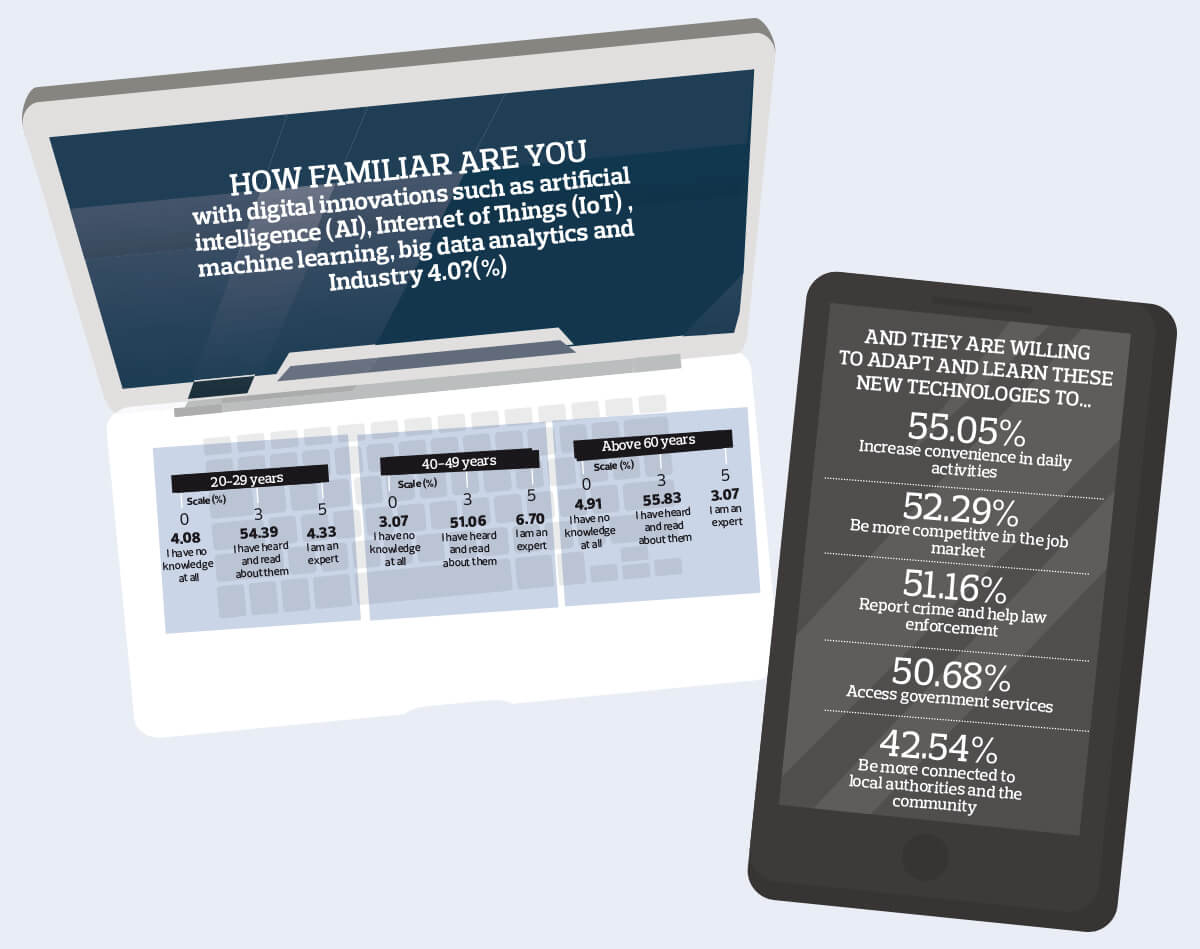
Done right, greater digitalisation of the country will lead to a stronger economy, as the survey respondents wanted.
Who knows what other unrealised benefits could be unlocked besides the obvious – curtail corruption, pivot and reskill workforce for the future, increase quality of life for Malaysians – if the nation takes on an agile and innovation-led mindset.
With such wide-ranging benefits that translate into a better life and future for all Malaysians, clearly the time to reimagine Malaysia is now upon us — and there is no time to lose.